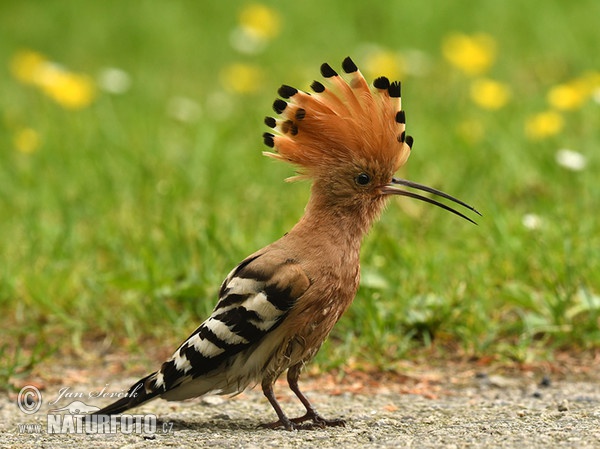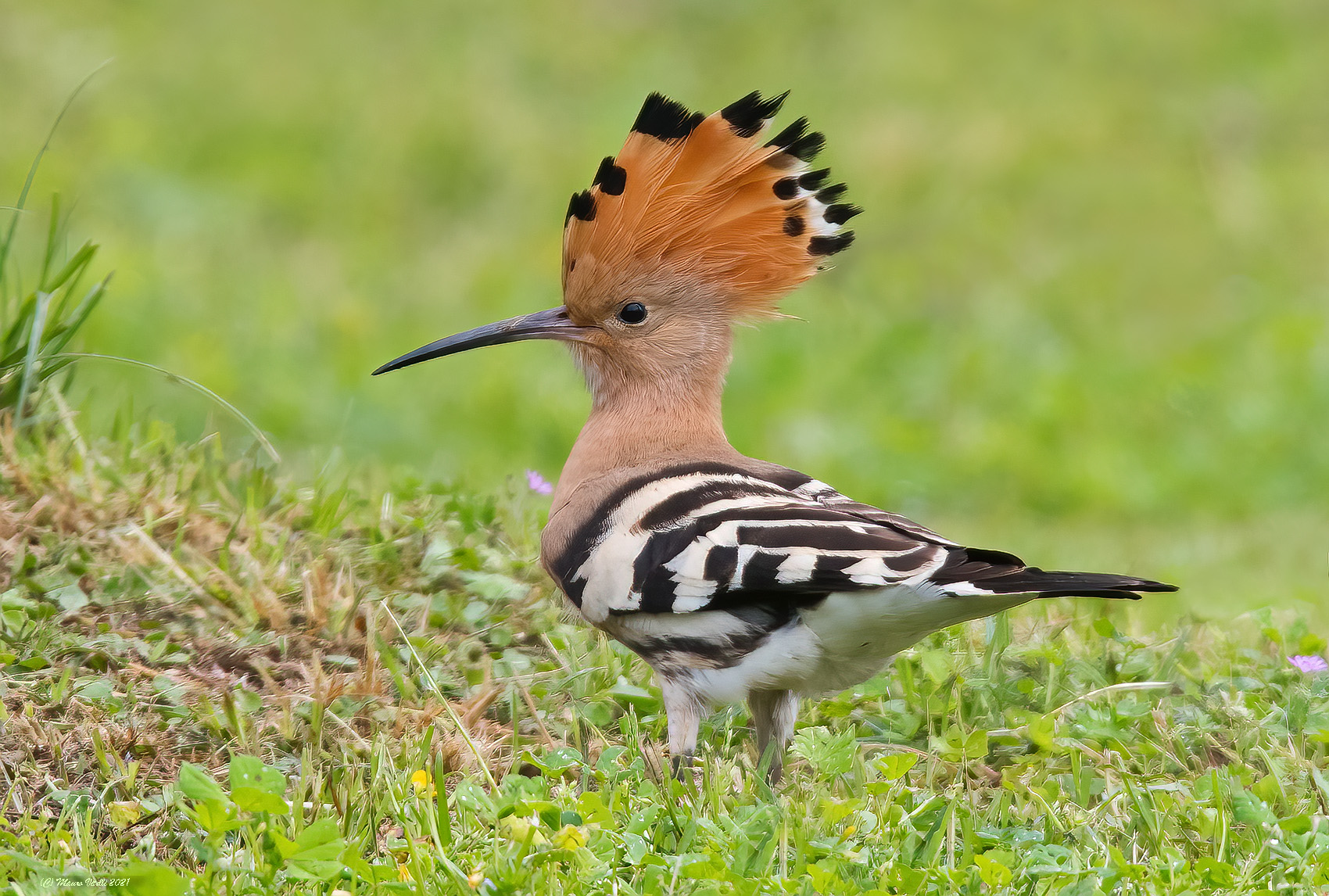The Eurasian Hoopoe: Upupa Epops Saturata
Share
The Eurasian Hoopoe, scientifically known as Upupa epops saturata, is a captivating bird belonging to the family Upupidae within the order Coraciiformes. This striking species is renowned for its distinctive appearance and fascinating behaviors. Found primarily in Eastern Siberia and Manchuria, it extends its range southward through Mongolia and into northern China, including regions like Yunnan, Kwangtung, and Fohkien. This article delves into the physical characteristics, habitat, diet, behavior, reproduction, and conservation status of this remarkable bird.

Physical Characteristics
The Eurasian Hoopoe is easily recognizable due to its unique plumage and crest. The adult bird typically exhibits a striking combination of colors, with a sandy-brown body adorned with black and white stripes on its wings and tail. The most notable feature is its long, curved bill, which is perfectly adapted for foraging in the ground for insects and other small invertebrates. The crest, which can be raised or lowered, adds to its distinctive appearance, making it a favorite among birdwatchers.
Juveniles are similar in appearance to adults but may lack the vibrant colors and well-defined crest. The size of the Eurasian Hoopoe ranges from 25 to 32 cm in length, with a wingspan of approximately 44 to 48 cm.

Habitat
Upupa epops saturata thrives in a variety of habitats, including open woodlands, grasslands, and agricultural fields. It prefers areas with scattered trees and shrubs, which provide both nesting sites and foraging opportunities. The bird is often found in regions with a mix of open ground and vegetation, allowing it to hunt for food while also having cover from predators.
During the breeding season, the Eurasian Hoopoe typically nests in tree cavities or in the ground, often utilizing old woodpecker holes. The choice of habitat is crucial for the survival of the species, as it directly impacts their ability to find food and raise their young.

Diet
The diet of the Eurasian Hoopoe primarily consists of insects, including beetles, grasshoppers, and caterpillars. They are also known to consume small reptiles and plant matter. Their long, slender bills allow them to probe into the ground and extract hidden prey, making them effective foragers.
Hoopoes are often seen foraging alone or in pairs, using their keen eyesight to spot movement in the grass or soil. Their feeding habits play a vital role in controlling insect populations, contributing to the ecological balance of their habitats.

Behavior
Eurasian Hoopoes are known for their unique behaviors, particularly their courtship displays. Males perform elaborate displays to attract females, which include puffing up their crests and making a series of distinctive calls. Their vocalizations are a mix of cooing and trilling sounds, which can be heard during the breeding season.
These birds are generally solitary or found in pairs, and they are not migratory. However, they may move to different areas in search of food or suitable nesting sites. Their ability to adapt to various environments is a testament to their resilience.

Reproduction
The breeding season for the Eurasian Hoopoe typically occurs in spring. After a courtship period, the female lays a clutch of 4 to 7 eggs, which she incubates for about 15 to 18 days. The male assists in feeding the female during this time. Once the chicks hatch, both parents are involved in feeding and protecting them until they fledge, which usually occurs around 30 days after hatching.
The young hoopoes are dependent on their parents for food and protection until they are capable of foraging on their own. This parental care is crucial for the survival of the chicks, as they learn essential skills during this period.
Conservation Status
The Eurasian Hoopoe is currently classified as Least Concern by the International Union for Conservation of Nature (IUCN). However, habitat loss due to agricultural expansion and urbanization poses a threat to their populations. Conservation efforts focused on preserving their natural habitats and promoting sustainable land use practices are essential for ensuring the long-term survival of this species.
Birdwatchers and nature enthusiasts can contribute to conservation efforts by participating in local bird counts and supporting organizations dedicated to wildlife preservation.
In summary, the Eurasian Hoopoe, Upupa epops saturata, is a remarkable bird with unique physical characteristics, fascinating behaviors, and an important role in its ecosystem. Observing this bird in its natural habitat can be a rewarding experience for birdwatchers, especially in regions where it is commonly found. By understanding and appreciating the Eurasian Hoopoe, we can help ensure its continued presence in our world.